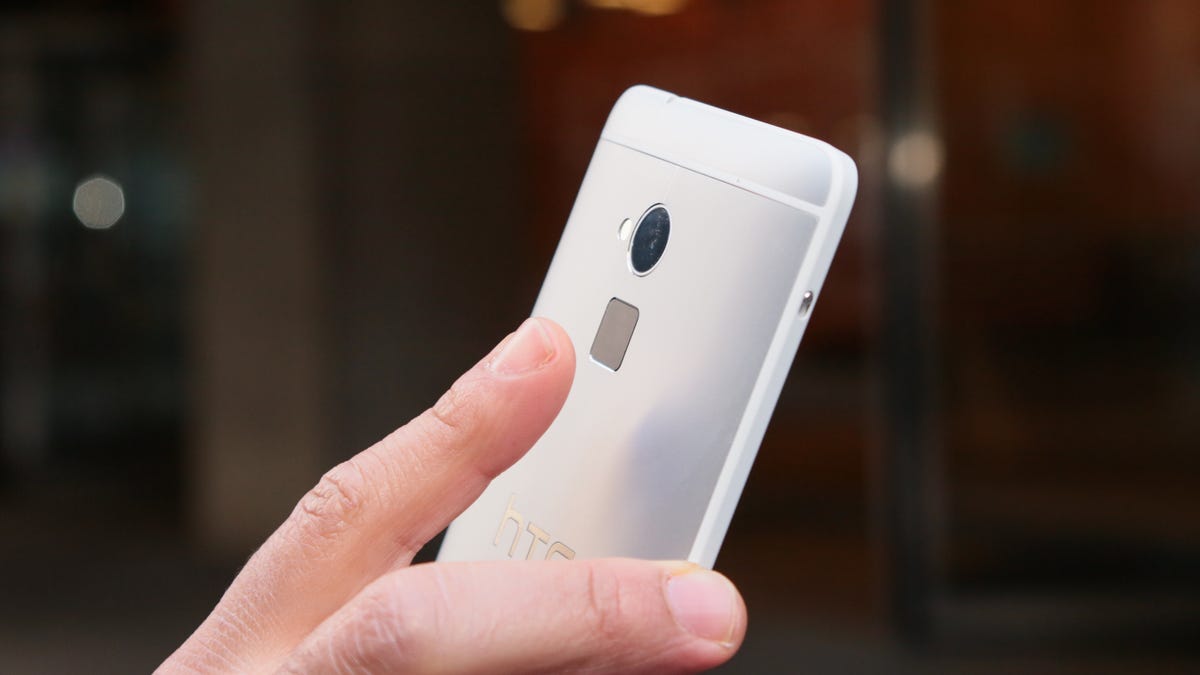Beyond Touch ID: Where mobile fingerprint scanners are headed
CNET talks to Synaptics, a provider of fingerprint recognition technology, to see how the industry will counter Apple.

LAS VEGAS -- Apple isn't the only one looking to shove a fingerprint sensor onto its smartphone.
There will be several high-profile smartphones that will include fingerprint scanners, according to Michael Maia, vice president of sales for the biometric division of touchscreen and touch pad company Synaptics. Its product will ship in the first quarter, and more phones should come out in the second half, he said.
"It will be fairly mainstream," he told CNET at the sidelines of the Consumer Electronics Show.
Fingerprint recognition technology hit mainstream awareness when Apple decided to make it its marquee feature on the iPhone 5S. Pretty soon, millions of people were putting their finger on the home button to unlock their phone.
Now, other companies are looking to add the same feature to their own flagship smartphone.
The
It's similar to the thin fingerprint sensor found in laptops. Validity had virtually the entire share of that market and continues to support PCs under Synaptics.
In contrast, Apple used a different technology from Authentec, which it acquired in July 2012. Rather than swipe, a person just has to place their finger on the home screen, where it is scanned and recognized. Analysts have noted that the placement of the scanner on the home button, a natural place for a finger to rest, makes it easier for consumers to warm up to it.
The HTC One Max's sensor is on the back, and Maia said a lot of smartphones with a fingerprint sensor would likely include them somewhere on the back. He noted that Apple has the luxury of placing it on its physical home key, while many phones running Android or Windows Phone lack the space on the front of the phone. Either the phone has capacity touchscreen buttons, or the bezel around the phone is too small to allow for a physical key.
The Holy Grail, Maia said, is to get the fingerprint scanner embedded under the glass, negating the need for a physical scanner. But he noted that was likely still far away -- certainly more than a year from now.
Meanwhile, Synaptics is working to create different versions for different handset makers looking to stand out. Unfortunately, Maia wouldn't comment on which vendors were looking at his technology.
At least one big player, Samsung Electronics, had looked at the technology. Samsung initially planned to include a fingerprint scanner in the
Samsung could be including fingerprint-reading technology, but the latest word is that the company may use an iris-scanner instead.
Apple wasn't the first to use a fingerprint scanner either. Motorola, before getting absorbed by Google, came out with the
Beyond biometrics, Synaptics showed off a few prototypes of laptop keyboards with built-in capacity sensors beneath them. Allowing you to do gesture controls by swiping across keys, or lighting up the keys just by touching them. The company said laptops with this feature might come during the holidays.
CNET's Shara Tibken contributed to this story.

